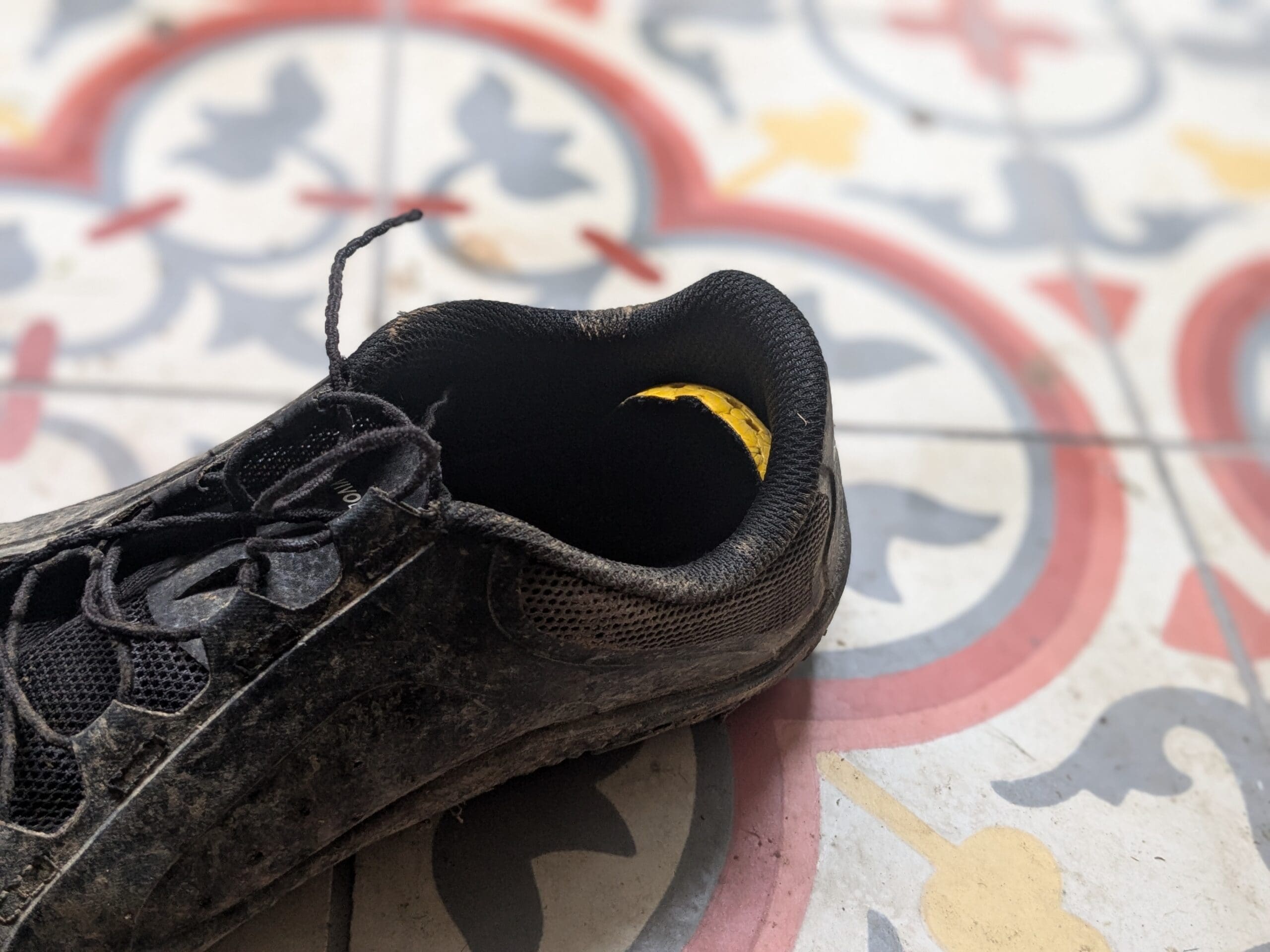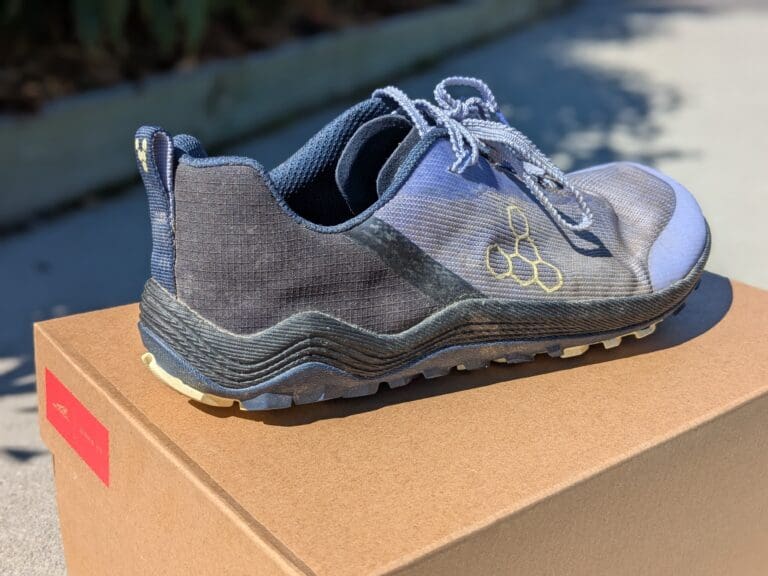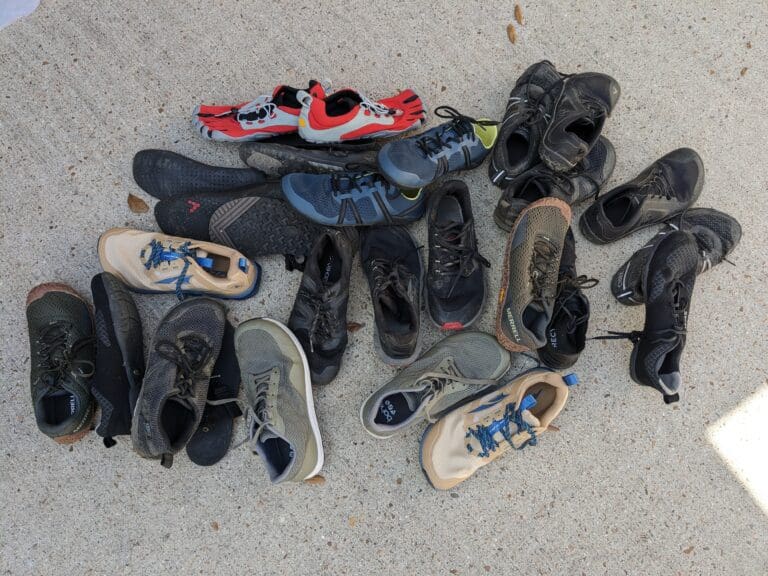Have you ever been on a run and felt your insoles shifting underfoot? Maybe even running up the back of your heel.
It’s distracting.
It’s uncomfortable.
Even worse, it could lead to blisters if the upper material starts rubbing due to a poor fit.
If you’ve experienced this frustration, you’re not alone.
I see many dumbfounded minimal shoe wearers on Reddit and Facebook with insoles slipping up the back of their heels, and it doesn’t even correlate with certain brands and models.
So why does it happen!?
How do we solve it?
That’s what this post is here for. Keep reading.
Affiliate Disclosure: By clicking through the links on this page and purchasing the products, you’ll be helping me out. This is done because I receive a kickback from the sellers at no extra cost to you! Thank you so much for supporting us!
Which Altra Shoe is for you?
Take a quick 4-question quiz to identify the perfect Altra running shoe for your feet! You'll get both road and trail options based on your answers!
Why Insoles Slip in Shoes
It’s a manufacturing defect, is it not? Or a poorly designed shoe?
Well, not always.
When we use our shoes for running or even walking, we exert forces in all directions. One of the largest forces is horizontal, moving forward and backward.
These forces have to be transferred somewhere. Often, they’re transferred into friction between the shoe’s outsole and contact point on the ground (and here’s why your outsole rubber wears down! But that’s not what we’re talking about here). But if the insole is not firmly held in place through friction or pressure, it can take some of the force and slip.
So why would this happen?
You might know I’m a stickler for shoe fit. Because if the shoe doesn’t fit, it’ll never work for you.
Insole slipping isn’t the biggest worry about a poorly fitting shoe, but it’s a telltale sign that the shoe isn’t right for you!
If the shoe is too deep, i.e., there’s too much room over the top of the foot, and your foot slides back and forth in the shoe, over time, this back-and-forth movement can shift the insole around in the shoe.
Now, if your foot were correctly locked down, this back-and-forth movement would not occur, and thus, no movement of the insole would occur!
So, number one, think about fit. Does your foot slide around in the shoe, especially on uphills and descents, where it’s more likely to happen?
The Fix
Find a shoe that fits well!
And sometimes, I’m sorry, that may mean a specific brand or model is not for you. Often, a shoe’s “fit” is model-dependent, and changing in size is not enough to find the right fit.
If you’re trying to determine what brands and models fit your foot. Here’s a guide I put together.
If the model shape is right for you, sometimes you can shift down ½ a size, still have enough toe room, and achieve a better lockdown to reduce that back-and-forth movement.
Lastly, maybe you need to tighten your shoe properly so your feet don’t move around. Explore tightening the laces in different areas of the eyelets, and even use a lace lock, which I use in 95% of my running shoes!
Pretty disgusting, eh!
Next time you pull your foot out a shoe and notice it’s a little sweaty, pull the insole out too and notice if there’s moisture between the footbed and insole.
That extra moisture can create a slippy surface, allowing the insole to move around more freely.
It may not be just due to sweat, either.
Maybe you’re on a hike with a river crossing. The shoes may drain quickly, but the moisture stays under the insole for a long time.
The Fix
Got sweaty feet? Wear socks!
Use socks that absorb moisture, like thin wool or cotton socks. But be careful that these socks don’t hold on to too much water, either, because this can also be a source of blisters.
In general, just wear some thin socks, even when hot.
Fixing the moisture issue for river crossings is a little more difficult. If you have this situation in an Ultra, schedule a shoe swap at the next aid station. If you’re hiking, just stop for lunch, take your shoes off, take the insoles out, and leave them to dry for a bit.
I admit, sometimes the shoe could be designed better.
Shoes with very flexible uppers often suffer from excessive foot movement inside them due to a lack of secureness.
Your foot will still move around no matter how tight you lace up.
If you’re using these kinds of shoes for technical rough trail runs (I’m looking at you, Vivobarefoot Primus Trail Knit), your feet are bound to move. Add a little moisture here, and you’ve got an issue.

The Fix
Buy the right shoes for the right situations!
If you want a shoe for technical terrain or running fast races, stick to one with a more rigid upper. That way, your foot will move less in the shoe, and the insole will be less likely to shift.
A loose, knit upper is fine if you want comfortable shoes for walking around town. The forces that occur during walking are much less, so the foot moves less in the shoe. As long as the upper fits well and is not baggy or too deep, you’ll likely not have a problem with the insole moving.
Did you know the same insole is sometimes used across different sizes?
Take your insoles out and look at the number embossed on the bottom of the insole.
Depending on the manufacturer, sometimes you’ll see a range, and that’s because they use the SAME insoles for different modes and even different sizes!

So, once again, I will say using the insole to measure shoes is not a good method!
But that aside.
It also means that an insole could be a little too small for the size of the shoe you’re wearing. The small gap that could be present if the insole is undersized can allow for movement, and you guessed it: the insoles will move around!
The Fix
This one is tough to fix. Truly, this is a design flaw. But you could still replace the insole with one that fits better, meaning you don’t have to waste the shoe!
I often switch insoles in and out of shoes for an optimal fit.
What if you have a pair of shoes, and you don’t want to replace them because everything else is working well?
Two simple fixes can solve 99% of problems.
Double-sided sticky tape
Slipping of insoles is usually due to a lack of friction, so all we have to do is add more friction!
To do that, we can simply run a line of double-sided sticky tape down the center of the insole and press the insole firmly in place.
It technically doesn’t have to “stick” 100%. We want to add enough friction between the footbed and the insole to stop movement.
Switch out your insoles!
As mentioned before, I do this all the time.
Just find some insoles that fit the shoe well and try them out. You might find that the problems are alleviated altogether.
If you’re looking for new insoles, Xero Shoes, Vivobarefoot, and Freet sell them online. Just be sure to choose an insole of the correct thickness to achieve an optimal depth fit.
Is your shoe..
- Too tight over the top of the foot? Choose a thin insole – 2-3mm.
- Too loose over the top of the foot? Choose a thick insole – 4-6mm
That’s it! I hope that helped.
And if it did, and you ever see this question hanging around on forums again, send the writer to this blog post!
Also, do you have a different experience? Share it! I’d love to hear other “fixes” for those slippy sliddy insoles.



